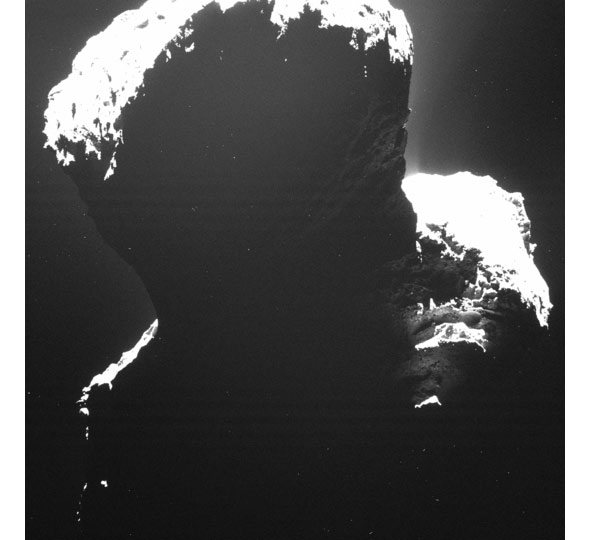Create a free profile to get unlimited access to exclusive videos, sweepstakes, and more!
The Dark Side of a Comet

Every now and again, I think it's OK to simply post an amazingly dramatic and moody photo of an astronomical object. So please take a moment to appreciate this portrait of a brooding comet:
This is 67P/Churyumov-Gerasimenko, the double-lobed 10 billion ton chunk of ice and rock that is currently the flame to the ESA Rosetta spacecraft's moth. The images we've seen so far have been well-lit by the Sun, but this one was taken when the comet was between the probe and the Sun. With only the illuminated limb of the comet visible, how is it we can still see some features in the dark landscape?
Comets are not static; they change. As they approach the Sun, the ice vaporizes, releasing dust. This dust scatters the sunlight, providing a soft glow that fills in a bit of the gloom.
Rosetta was only 19 kilometers from the comet when this picture was taken. That's a whisker's width; when I go bicycling in the summer, 19 km would be a fun jaunt.
The spacecraft is so close because it's gearing up for history: Tomorrow, Nov. 12 at 16:03 UTC (11:03 Eastern), the Philae lander will touch down on the surface of 67P, the first time such an attempt has ever been made. As usual when it comes to solar system encounters, Emily Lakdawalla has what you need to know about the landing.
I'm very excited about this. We've slammed a probe into a comet before, but we've never soft landed on one. The images will be stunning, I'm sure, and this is an entirely new type of world we've never seen in such detail. This will be quite an adventure.


























